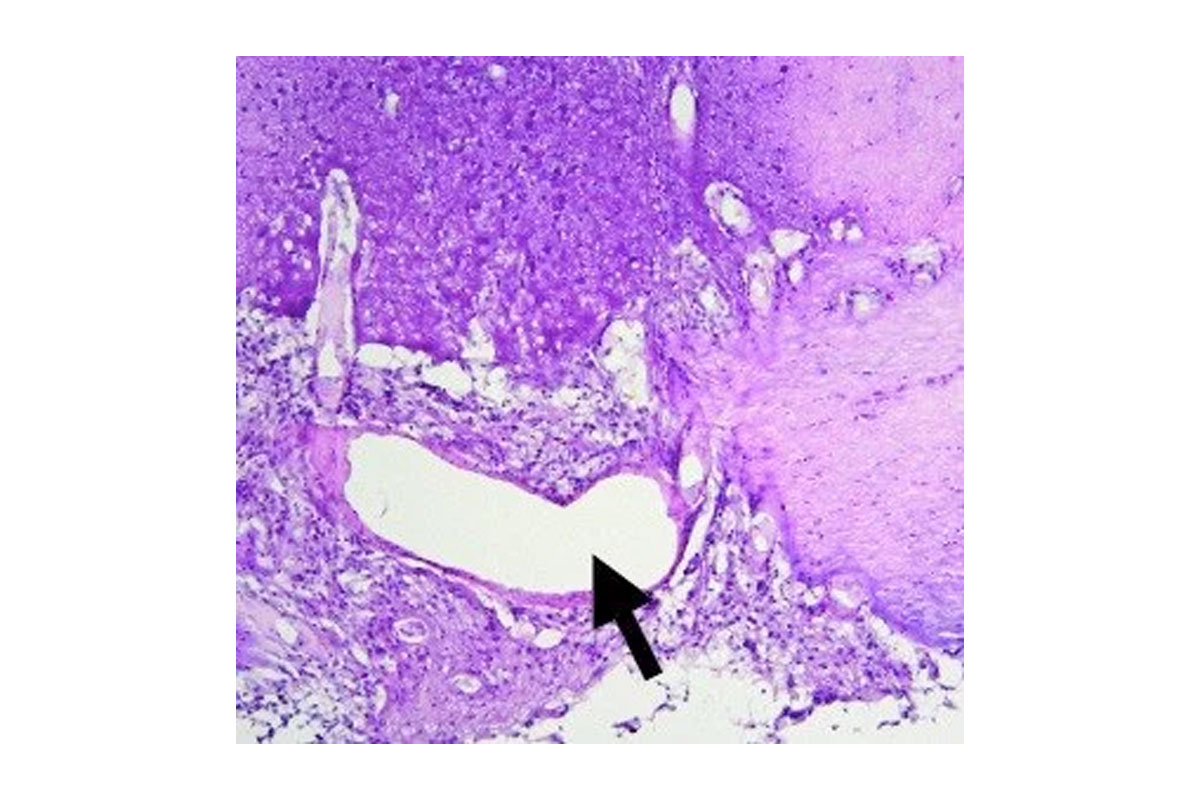
Histological section of a DIPG like tumor formed by engineered human ES cell progeny/ Arrow shows the basilar artery.
Recent sequencing data have demonstrated that pediatric brainstem gliomas (DIPG) are characterized by mutations in histone genes, namely single amino acid substitutions in the tails of H3.3. While a role for post-translational histone modifications in cancer is well recognized, this was the first time mutations in a histone gene were identified as potential drivers in tumors. Key features of K27M-mutated DIPGs are the restricted developmental window during which they emerge [mean age at diagnosis is 8 years] and their specific midline location, which implicate a developmentally early and anatomically specific cell of origin. We postulated that human ES neural progeny might present an ideal candidate to model these tumors. In a recent publication in Science4 we demonstrate a cell context specific tumorigenic effect by H3.3K27M. The transformed cells were capable of initiating large tumors upon grafting in the brainstem of immunodeficient mice. Expression of H3.3K27M in neural precursors led to a developmental resetting to an earlier more primitive stem cell state, thus providing some insight into the biological basis of tumorigenicity by these tumors. In addition, we adapted hES derived neural precursors and their transformed counterparts to an epigenetic drug screen. Selecting for drugs with low IC50 and no negative impact on the normal cells, we identified and validated a menin inhibitor as a potential therapeutic agent against these tumors. Ongoing work is focused on the developmental of a therapeutic strategy for DIPGs as well as on dissecting the biology of histone mutations in tumors. We are also interested in expanding human pluripotent stem cells as a platform for modeling tumors.